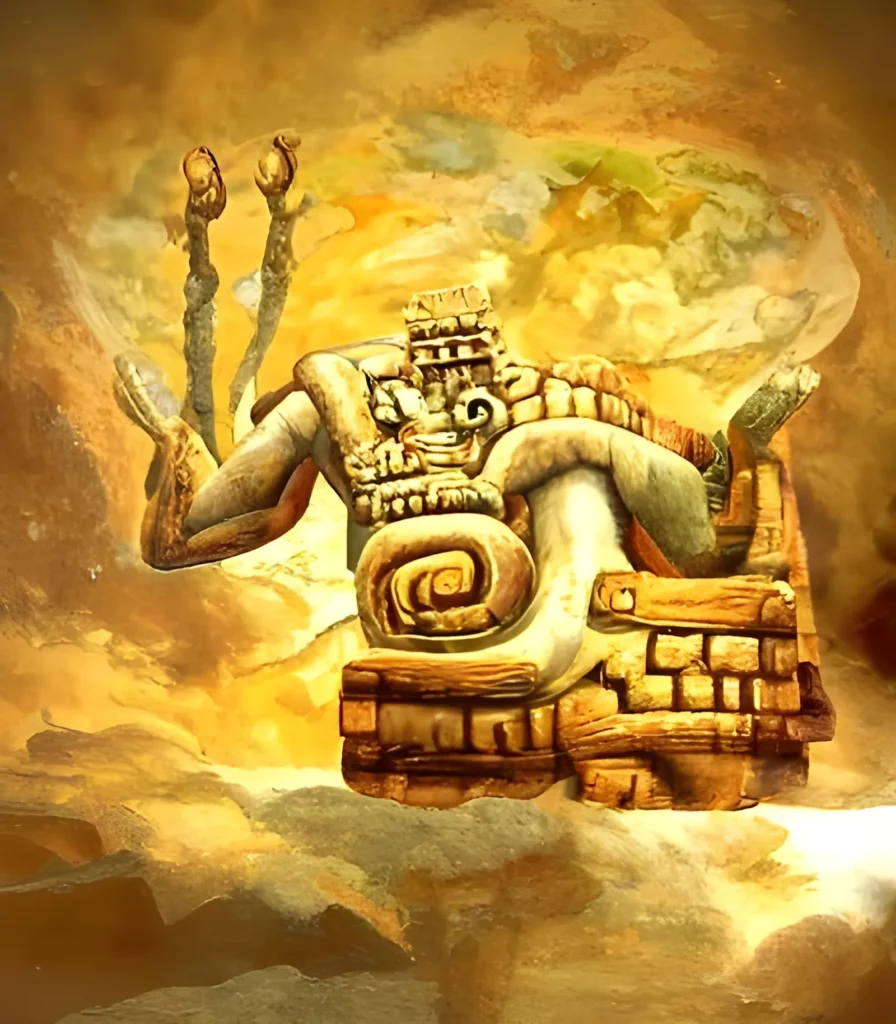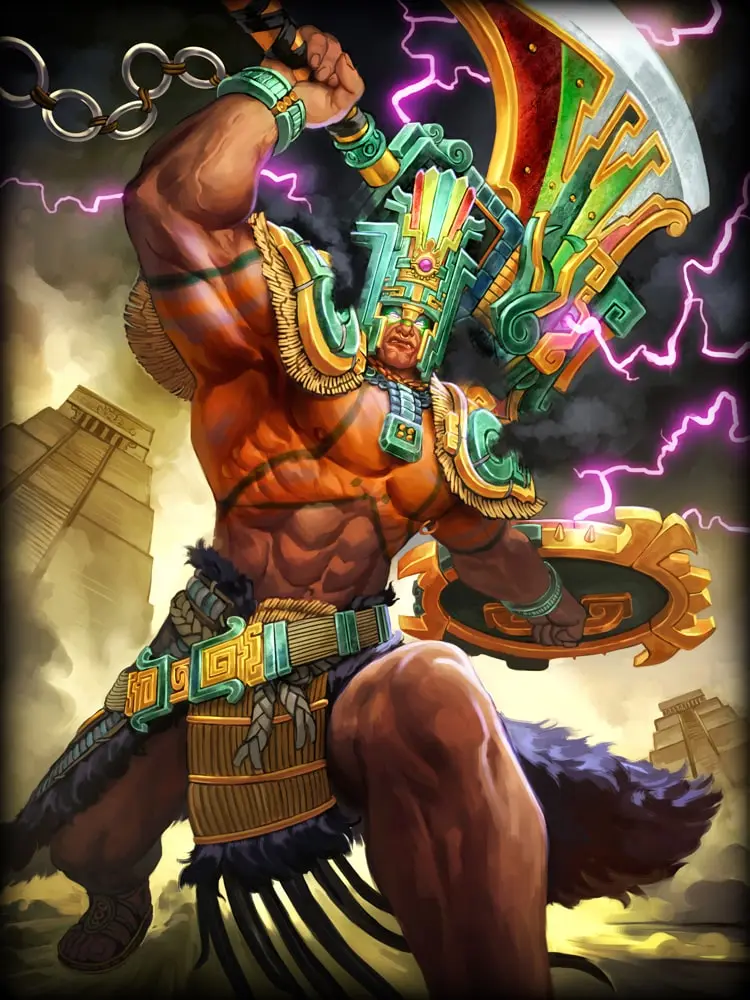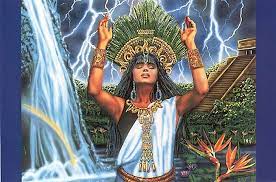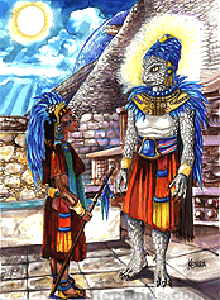The ancient Maya created an incredible civilization in Central America from around 1000 BCE to 1500 CE. They worshiped many nature deities and built pyramid temples, palaces, and statues for them. Maya religion is described in surviving codices including the Madrid Codex, the Paris Codex, and the Dresden Codex, as well as the Quiché Mayan religious text, the Popol Vuh.
Itzamna
The supreme Maya deity and creator god, Itzamna was the ruler of the heavens by day and night. It is believed that his name means iguana house or lizard house. In the Samhitas, he is depicted as an old man with sunken cheeks and toothless jaws. The Maya believed that he was the inventor of writing and the calendar. He was also the patron deity of medicine and protector of priests and scribes.
Itzamna also appeared as four deities called Itzamna, represented by a two-headed, dragon-like iguana. They were associated with the four directions and related – the colors north, white; ex, red; West, Black; and south, yellow. In post-Columbian writings, he is referred to as the son of a creator god named Hunab-ku, whose name means One-God.

Kukulcan
In the Postclassic, Central Mexican influences were introduced to the Maya religion. Identified with Quetzalcoatl of the Aztecs and Toltecs, Kukulcan was the feathered serpent god of the Maya. He was not originally a Maya deity but later became important in Maya mythology. In the Popol Vuh, he is regarded as a creator god associated with wind and rain, carrying the sun safely across the sky and into the underworld.
As a deity, Kukulcan was associated with Chichén Itzá, where a large temple was dedicated to him. However, the city is not purely Maya as it was only inhabited at the end of the Maya period, and was heavily influenced by the Toltecs who probably lived there. Scholars believe that Kukulcan was a foreign religious belief that was adapted to a local religious belief. Scepter by Maya rulers. He is also associated with agricultural abundance and lightning. Maize and cocoa are believed to have been discovered after God struck the mountains with one of his lightning bolts.

Chac
In Central America, rain is vital to agriculture, so naturally, rain gods were very important to the people. Chac was the Maya god of rain, water, lightning, and thunder. Like other Mayan deities, he also appeared as four deities called Chacs, who were believed to cause rain by emptying their gourds and throwing stone axes at the earth. with a human body. He wears a conch shell on his ears and holds an ax which is the symbol of Vajra. During the post-classical period at Chichen Itza, human sacrifice became associated with the rain god, and the priests who held the sacrificial victims were called chances.

K’inich Ajaw
The Maya feared and worshiped the sun god, K’inich Ajaw because he could offer the life-giving properties of the sun but could also give off too much sunlight to cause drought. His name means Suryamukhi Swami or Sunflower Ruler, but he is originally named as Bhagwan Ji. Some of his aspects include a jaguar and a water bird, where the former symbolizes the Sun during its night journey through the underworld. the underworld. He is also associated with kings and royal dynasties. He is usually depicted as being born or rising in the East and aging as the sun sets in the West. In iconography, he is recognized by his large square eyes, aquiline nose, and the skin or sun symbol on his head or body.

Ixchel
Ixchel or Chak Chel, also spelled Ix Chel was the goddess of the Moon, childbirth, healing, and medicine. Some sources suggest that she was possibly a female manifestation of the god Itzamna, but others suggest that she is his wife. During the Yucatán period of the 16th century, she had a sanctuary in Cozumel and her cult was popular. hands and feet. She was a patron of feminine crafts, especially weaving, but was generally portrayed as an evil woman with unfavorable aspects.

Bacab
In Mayan mythology, Bacab is one of the four gods who stood at the four corners of the world supporting the sky and the earth. These deities are believed to be brothers and offspring of Itzamna and Ixel. In the Postclassic Yucatán period, they were known by the names Kentzikanal, Hosenac, Hobanil, and Sakimi. Each of them guided one year of the four-year cycle as well as one of the four cardinal directions. The greatest, because he is also the greatest of the four gods.
In some interpretations, the Bakab may be four representatives of the same deity. Bakab is also known as Pawahtun, the patron of scribes, and is depicted as an old man wearing a netted headdress and a snail or tortoise shell on his back.

Cizin
Cizin is a Maya god of earthquakes and death, often depicted in scenes of human sacrifice. Scholars suggest that she may be an aspect of a malevolent underworld deity known by several names, such as Yum Simil and Ah Puch. He was also called a stinker because he was said to always have a foul odor with him. Sometimes, he is accompanied by an owl—a messenger from the underworld. It is said that he keeps souls in the underworld by his cunning and torments. He also gives the example of destroying the trees planted by Chak, the god of rain. After the Spanish conquest, he became associated with Christian Satanism.

Ah musen cab
Ah Musen Cab, the god of bees and honey, is usually depicted with the wings of a bee, usually in the position of alighting or disembarking. He is associated with a Mayan goddess, Kol Cabe, who was also responsible for bees and honey. The Maya word for honey was also the same word for the world, suggesting that it too was involved in the creation of the world. Some believe that he was the patron of Tulum, an area that produces a lot of honey.

Yama Kax
According to the Popol Vuh, the gods created humans from water and maize flour. The Maya maize god, Yama Kax, is often depicted with an elongated head, which resembles the shape of corn on the cob. In the books of Chilam Balam, the deity of maize is given several designations, which are associated with different stages of the development of corn.
While the foliaged maize god is depicted as a maize plant that has the shape of the god’s head, the tonsured maize god is depicted wearing a shaved head, a netted jade skirt, and a belt with a large shell. The latter is thought to be associated with agricultural cycles, as well as with myths of creation and resurrection.

Ahau
Also known as an Ahau, a rat was a Maya deity of merchants, travelers, and warriors, and is found only in postclassic codices. In the Dresden Codex, he is depicted as black and white, while the Madrid Codex depicts him as completely black and carrying a bag over his shoulder. He is the god of cacao but is also associated with war and death. Killing people and setting houses on fire. Also known as God Eff, he is associated with human sacrifice and violent death.
In the Dresden Codices, he is depicted as being eaten by insects. Even though he was feared and not worshiped that much, people still prayed to him for success in battle. The nature of the deities. The modern-day Maya people, who number about six million, still practice a religion based on ancient ideas and animism, but most Maya today are nominally Roman Catholic. However, their Christianity generally overshadowed the native religion, and some Christian figures are identified with Maya deities.

